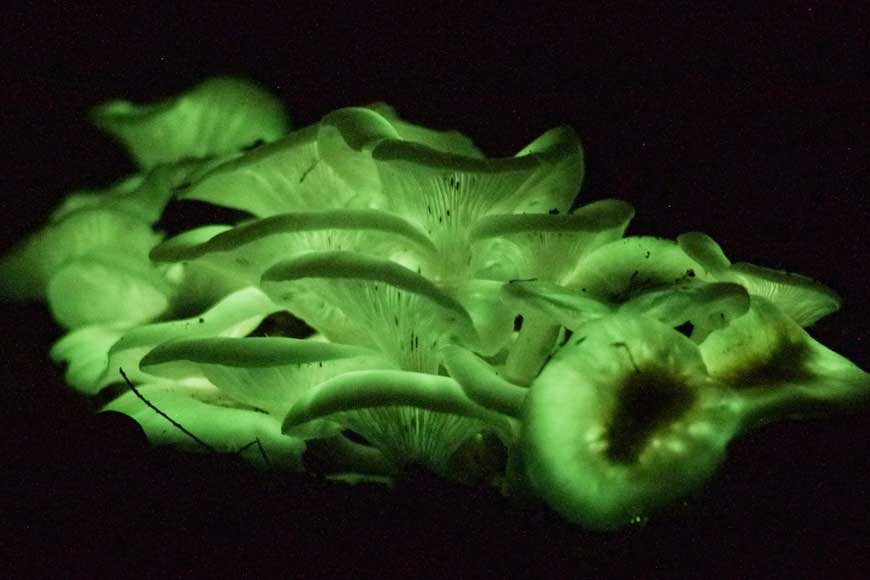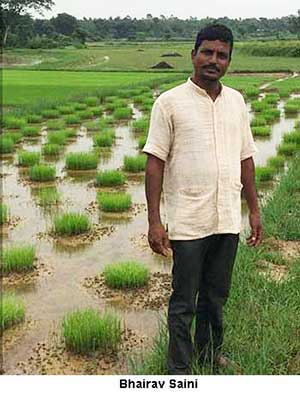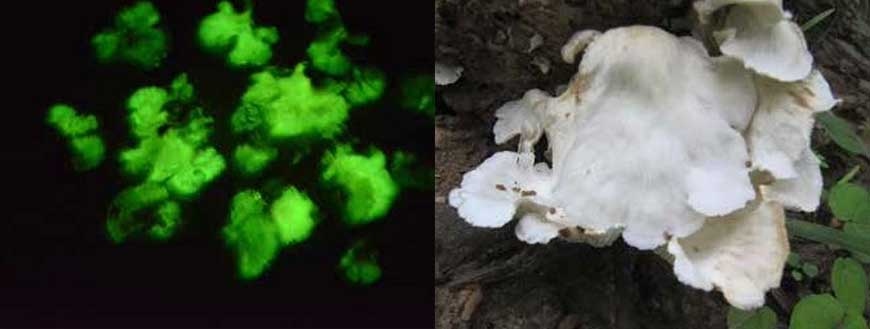Rare ghost fungus spotted in Bengal

It was a rainy August evening in the village of Panchal in Bankura. Farmer Bhairab Saini, famous for his rare lost variety of Bengal paddy cultivation in Bankura clusters, was returning from a hard day of work in the fields. He was accompanied by his friend Shakti, when they suddenly spotted an unusual faint greenish-blue light coming from the bamboo grove. Well, that was eerie indeed, like the Goopi Gayen Bagha Bayen movie shot, where the Ghost King arrives from nowhere. Bhairab and Shakti were initially taken aback. They never encountered such scenes in their village and thought it might be an unusual creature, a venomous snake or even a ghost! ‘However, we mustered enough courage and ventured into the area,’ said Bhairab Saini from Panchal, Bankura in his exclusive interview to GB. They had indeed stumbled upon the rare Ghost Fungus --- a prized fungus.
 ‘What we found near the Panchal forest of Sonamukhi was a special fungus that sends out light after sunset or in darkness,’ he adds. The fungus immediately created a buzz among locals. ‘Wild mushrooms often grow on decaying wood. After flashing the torch light, the greenish-blue hue disappeared, while in darkness it showed its splendour. We tried to take photographs, but it was too dark, thus I picked up a few mushrooms and took home to try capturing the image there. However, it was almost impossible to get a good image of the luminescent mushroom despite several attempts,’ says Bhairab.
‘What we found near the Panchal forest of Sonamukhi was a special fungus that sends out light after sunset or in darkness,’ he adds. The fungus immediately created a buzz among locals. ‘Wild mushrooms often grow on decaying wood. After flashing the torch light, the greenish-blue hue disappeared, while in darkness it showed its splendour. We tried to take photographs, but it was too dark, thus I picked up a few mushrooms and took home to try capturing the image there. However, it was almost impossible to get a good image of the luminescent mushroom despite several attempts,’ says Bhairab.
Though colloquially this fungus is called spooky fungus, scientists believe that the scientific name of this ghost fungus is Omphalotus nidiformis. A bioluminescent mushroom that grows on dead and decaying wood; it is not edible due to its toxicity. This species is seen in Tasmania (Australia), but is not common in India. In 2012, it was sighted in Kerala, and What Bhairab and his friend saw in Bankura, might be one of the first sightings in Eastern India. The reason for bioluminescence is probably to attract insects (beetles, crickets) and snails so that they disperse the spores across the forest and help in the mushroom’s regeneration. It breaks down dead wood and thus helps in recycling nutrients to the soil.
The ghost fungus contains a light-emitting substance called luciferin (lucifer meaning light-bringing). In the presence of oxygen, luciferin is oxidized by an enzyme called luciferase. As a result of this chemical reaction, energy is released as a greenish light. To experience ghost fungi at their most spectacular you need to allow your eyes time to adjust to the darkness, and don’t use a torch. Meanwhile in Bankura, news had spread and people were thronging around Saini’s house to get a glimpse of this unusual mushroom, as no one had seen them before. Some contacted the media, who brought in better cameras and took pictures and covered it in a local channel. Some of his friends started searching the internet and discussed the matter with experts to identify what this mushroom could be, and they narrowed the search to Omphalotus nidiformis.

After such discovery, many scientists and media, have started visiting this place that was even a few days ago a quiet hamlet. Today, a small place once unexplored has become a tourist attraction spot. This mysterious illuminating spooky fungus leaves us thinking that the world is full of surprises, one just needs to know where to look for them – just like Bhairab and his friend did.











